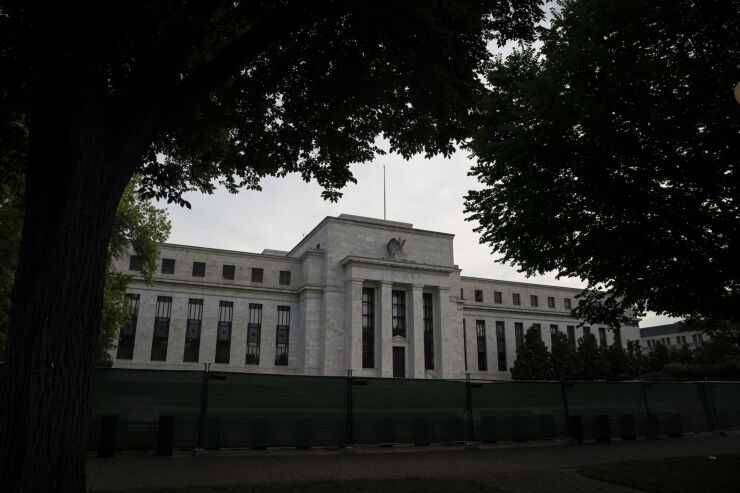Foreign banks, like their domestic counterparts, play a critical role in the United States' financial system. They hold more than $5 trillion — or one-fifth — of total
Yet, despite their similarities, the largest foreign banks are not subject to the same oversight as their U.S. peers.

In 2020, then-Federal Reserve Vice Chair for Supervision Randal Quarles removed the four most systemically important foreign banks — Credit Suisse, Barclays, Deutsche Bank and UBS — from the agency's most rigorous supervisory program, the
Last month, President Biden's nominee Michael Barr was sworn in as Quarles's successor. As the Fed's top banking regulator, Barr should quickly restore the Fed's supervisory oversight of these four foreign banks and reimpose standards aimed at creating a safer and more sound U.S. financial system.
The Fed established the LISCC program to help fulfill its statutory mandate to supervise the most systemically important financial institutions, i.e., firms whose failure would result in significant risks to financial stability. The LISCC program is made up of a multidisciplinary group of Fed board and reserve bank staff conducting ongoing, frequent, horizontal and firm-specific reviews. Through these exercises, supervisors can identify and address potential risks at the individual firm level and across the peer group. Throughout the decade after the financial crisis, resultant reforms have
However, the Trump administration's deregulatory agenda and appointment of laissez-faire banking regulators has chipped away at many of these post-crisis reforms. For much of the program's existence, the largest and most complex domestic and foreign banks were supervised similarly under the LISCC regime. In removing the foreign banks from LISCC, Quarles
Quarles's
At a high level, the tailoring rule categorized firms based on their size and risk profile, placing each bank into one of four categories. The rule limited Category I to U.S. global systemically important banks — by definition excluding large foreign banks, including those removed from LISCC.
Importantly, the rule has downstream deregulatory implications for the foreign banks.
While the
In 2019, for instance, Fed examiners
Even before the tailoring rollbacks, large foreign banks have taken advantage of regulatory and supervisory blind spots. After the financial crisis, foreign banks were required to form intermediate holding companies (IHCs) to house their U.S. operations.
These IHCs are generally subject to enhanced regulatory oversight. However, firms were allowed to conduct activity via branches, or separate legal entities that are lightly regulated compared with IHCs. Over time, the branches of the four LISCC foreign banks have ballooned, growing by
It is also worth noting that much of the momentum behind the tailoring rule and decision to remove the foreign banks from LISCC started well before major global economic, health and geopolitical shocks such as the COVID-19 pandemic and the Russian invasion of Ukraine. Banks generally
With respect to the conflict in Ukraine, however, the board's latest Supervision and Regulation
Foreign banks, in many respects, are as important players in the U.S. financial system as their domestic counterparts. They should be regulated and supervised accordingly to ensure that they have the proper risk management practices in place to avoid conditions that could ultimately contribute to a future financial crisis. While reforming the tailoring rule will require action by the three federal bank regulators, Barr may unilaterally place the four largest foreign banks back into the LISCC portfolio. For the stability of the financial system, he should quickly do so.






